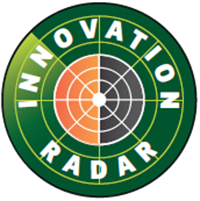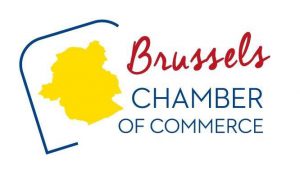Has your organization been granted a FP7, CIP or H2020 project? Do you intend to submit an EU R&D project under the forthcoming H2020 calls? Good news, you could be under the “Innovation Radar”!
 Although this is not really new (all begun in 2013), several entities already involved in EU R&D projects or willing to submit one are not fully aware of the existence of the “Innovation Radar”.
Although this is not really new (all begun in 2013), several entities already involved in EU R&D projects or willing to submit one are not fully aware of the existence of the “Innovation Radar”.
Under the EURIPIDIS project, a 3-year joint project between DG Connect and JRC-IPTS, the “Innovation Radar” was designed as a part of the project. It was (and it is) a tool focusing on the identification – in the FP7, CIP and H2020 programs – of high-potential innovations and innovators with high potential of delivery to the market.
The Innovation Radar wanted to answer the well-known remark: ”The European Commission’s R&D Framework Program constitutes an important share in R&D expenditures in Europe, but not all these technologies and innovations with commercial potential reach the market: why? And when they reach the market, what’s the impact?”
With such a purpose, this a data-driven methodology and tool delivers intelligence on FP funded projects and their impact on the market.
By focusing on 4 questions:
- What are the highest potential innovations in EU funded R&D projects?
- Who are the innovators behind these innovations?
- What are the “go to market” needs of any one of these high potential innovators?
- What can be offered that could help them to address those needs?
the tool works on data gather from +2000 distinct innovation and +4000 innovation organisations and its methodology includes 2 components: the first is the assessment framework for ranking innovations and the second is an assessment framework for ranking of innovators. Each component has its pre-defined set of criteria and indicators.
Thanks to data collection and analysis, the Innovation Radar allows identifying the main barriers which hinder commercialization. As mentioned in a report resulting from the Innovation Radar pilot phase, “projects tend to focus on technology-related steps over business-related ones. For example, 53% of the projects that plan to commercialise their innovations either created, or plan to create, a prototype. In contrast,only 30% of projects have carried out or plan to carry out a market study.
Business plan is on the agenda of 27% of projects that plan innovation commercialisation. Hence, in order to increase the chances of successful commercialisation of an innovative output, projects must take into account more than the technological aspects and introduce business-related elements into their organizations’ activities.
At the same time, one of the most common needs of key organizations trying to deliver innovations is partnership with other companies. This creates a demand for opening-up projects to more interactions with external specialised actors, e.g. business coaches or venture capitalist, which could help to improve the commercialisation chances of innovations.
Financing is seen as the major external bottleneck to innovation exploitation. 41.9% of project partners see lack of finance as a barrier to exploiting their innovative products or services. However, there seems to be a contradiction between what they claim to be a barrier and their actual behaviour; i.e. only between 5% and 6% of the projects have sought or are planning to seek private or public funding. Moreover, between 25% and 30% of the projects do not plan to seek capital or public investment.
On the other hand, organizations claim that their primary needs to fulfil their innovations’ market potential is partnerships with other companies and expanding to more markets”.
What’s in for your EU R&D project?
Started in ICT / digital theme under H2020, the Innovation Radar is now expanding over other H2020 themes and should go public by Q1 2018. It will be used for SME Instrument, FTI and Energy projects.
The potential innovations and/or innovators are identified with the help of external innovation experts. An Innovation Radar questionnairedeveloped by DG Connect will help evaluate the innovation potential by matching the answerS to questions with the assessment criteria.
The best innovators will be promoted through the Digital Single Market webpages in order to gain visibility among potential investors, users and buyers.
Using the radar, the best EU-funded innovators have been identified to compete with their EU-funded innovation for the annual Innovation Radar Prize. The top 20 innovators will be given the chance to compete in the Innovation Radar final, at the ICT Proposers’ Day event in Budapest (taking place on 9 November 2017).





